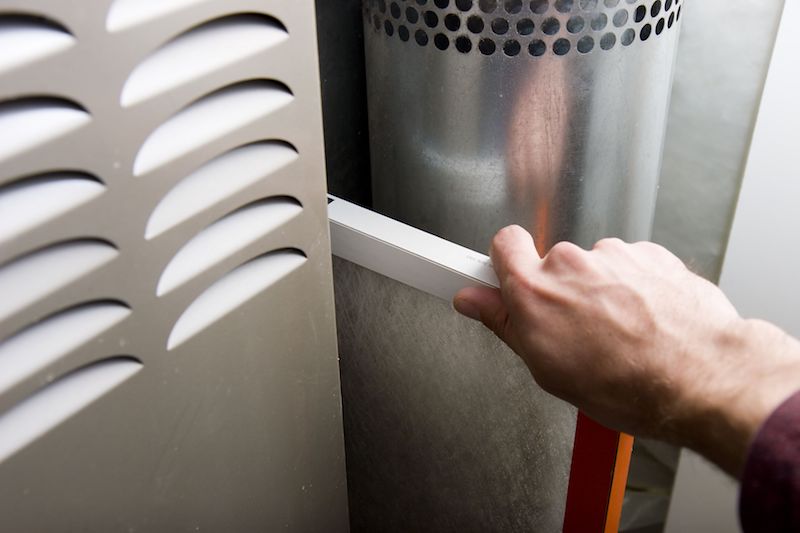
If you’re questioning whether your York house has poor indoor air quality (IAQ), it likely does.
We are indoors a lot. In reality, we’re inside up to 90% of the time, according to the U.S. Environmental Protection Agency. And the air inside houses could be 2–5 times more contaminated than outdoors, which might create long-term health concerns.
Most Common Sources of Unsatisfactory IAQ
We’ve compiled a list of the most common sources of bad IAQ, the problems they cause and how you can remedy these indoor air pollutants. If you’re troubled by the air inside your home, we suggest talking with a professional like Strine's about which products are a good fit for your home.
Volatile Organic Compounds
Volatile organic compounds, or VOCs, are vapors leaked by regular household items.
They’re found in paint and stains as well as:
- Furniture
- Carpet
- Building materials
- Cleaning products
- Cosmetics
- Air fresheners
- Candles
When these vapors accumulate indoors, they might irritate your eyes, nose and throat. They might also lead to headaches and nausea. Regardless of whether your home is in a rural or industrial area, an EPA study found indoor levels of these pollutants can be 2–5 times worse than the air outdoors.
Always adhere to the manufacturer’s guidelines when painting or cleaning. Opening a window can help fumes disperse faster.
Air purification systems can also improve your air. This equipment partners with your heating and cooling equipment to freshen indoor air. When seeking one, ensure it’s specifically made to eradicate VOCs.
Dust and Pet Dander
Dust and pet dander can irritate health problems like asthma and allergies, especially when it constantly gets redistributed by your residence’s comfort equipment. While you can vacuum more routinely and get an improved air filter, an air filtration system might be a better solution.
This equipment hooks to your heating and cooling equipment to provide strong filtration. Some kinds provide hospital-level filtration for getting rid of particles and bioaerosols.
Lasting Odors
Modern houses are closely sealed to increase energy efficiency. While this is fantastic for your energy bill, it’s not so good for your IAQ.
Stale odors can stay around for a greater amount of time since your home is pulling in less fresh air. Since keeping your windows open all year-round isn’t a possibility, here are two ways you can make your indoor air smell cleaner.
An air purification system is installed in your ducts to wipe out odors before they are redistributed. Look for one with a carbon filter and the power to eliminate dangerous VOCs. This equipment can also help keep your family healthy by wiping out most bacteria and ordinary allergy triggers like pollen and mold spores.
A ventilation system removes stuffy indoor air and replaces it with crisp outdoor air. There are two models of units (heat recovery and energy recovery), so ask our professionals for more information on which solution is ideal for your residence.
Unsteady Humidity
It’s essential your home’s humidity remains even. Air that has too much moisture can lead to mold, while dry air can create respiratory troubles.
Our technicians suggest 40–50% for the best comfort. To keep yours steady, think about getting a whole-home humidifier or whole-home dehumidifier with your comfort system.
Rather than having to drag a humidifier from room to room, this equipment delivers consistent humidity throughout your house.
Carbon Monoxide
Carbon monoxide is colorless gas you can’t smell. It’s caused by insufficient combustion in fuel-burning units, like gas heating systems, water heaters or fireplaces.
It causes a serious health risk. In small levels, it can cause flu-like ailments like headaches and nausea. It may be fatal in large levels.
We advise yearly furnace maintenance to make sure your system is operating properly. This work allows our professionals to find problems before they get bigger, including malfunctions that can cause carbon monoxide leaks.
The best way to keep your residence free of carbon monoxide is to put in detectors. These alarms should be on each floor near bedrooms and living spaces.
Improve Your Home’s Air Quality with the Strine's Experts
Aware that your residence has inferior air quality but not sure how to improve it? Or unsure which product is a good fit for you? Give our friendly HVAC pros a call at 717-383-4479 or contact us online today. With free estimates and pro service, we’ll help you choose the ideal solution for your home and budget.
